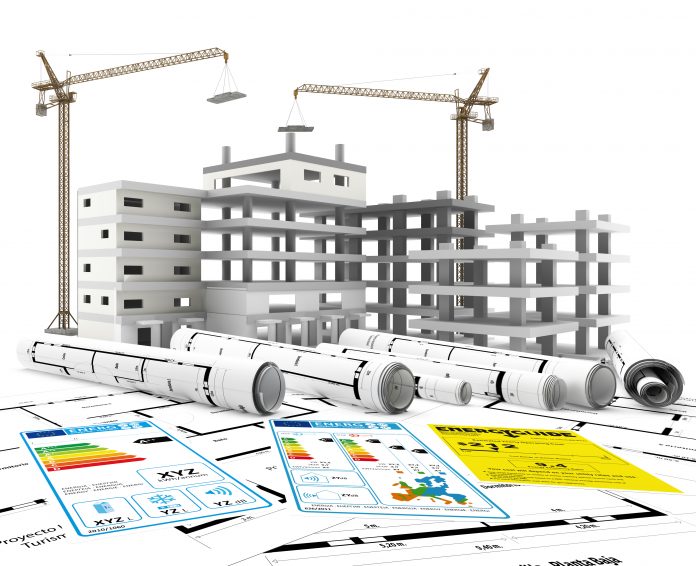Chris Rason, managing director at Aggreko, outlines how the efficient use of decentralised energy solutions can help building contractors navigate the current energy crisis without falling foul of legislation
It’s no secret that Europe is currently in the midst of one of the most severe energy crisis to date. The price of fuel has continued to rise sharply since late 2021, with recent geopolitical events only serving to exacerbate this. Factoring in the upcoming ban on the use of red diesel, effective from April 2022, it is clear that securing energy supply for construction projects has become more difficult than ever for contractors.
The effects and challenges of the energy crisis
The sharp spike in fuel and energy prices has undoubtedly been the most pronounced effect of the current energy crisis, rendering the use of both mains power and decentralised energy solutions more expensive than before. For this reason, ensuring efficient use of both resources will be key to reducing overheads.
Beyond this, peaking demand for energy has also caused the electrical grids of many cities to become strained, coinciding with the highest rate of activity in UK construction for 24 years. Resultantly, many contractors are beginning to find that their previously reliable grid connection is now increasingly unable to meet the needs of peak operations, with demand outstripping supply.
In the past, gaps in supply could be easily remedied through the use of diesel gen-sets, topping up supply when necessary. However, the advent of a number of key pieces of environmental legislation means that this is no longer possible. Namely, the European Union’s Medium Combustion Plant Directive (MCPD) aims to limit the emissions of sulphur dioxide and nitrous oxides, both of which are by-products of diesel combustion.
This development has significantly limited the use of these gen-sets, particularly in urban areas where local emissions are of greater concern. Moreover, with a number of major UK cities including London, Birmingham and Manchester introducing low or ultra-low emissions zones with more sets to follow, contractors have been stripped of one of the most effective methods of supplementing energy supply when it is needed most.
As the primary source of remedial power generation, replacing diesel gen-sets as contractors contend with a dwindling energy supply will no doubt prove a major challenge. No technology will likely prove a sole successor, so adopting an all-encompassing approach will be key.
Decentralised energy solutions: ‘Right-sizing’ and hybrid systems
A good starting point for contractors should be right-sizing – opting for solutions that do not exceed the energy needs of the site. This is one of the most effective ways to reduce both fuel and energy consumption and can be achieved through the use of a load-on-demand system. Here, where a site would previously make use of a single generator, multiple smaller generators are deployed instead, powering on or off in line with demand, and allowing only the necessary amount of fuel and energy to be used.
For an immediate impact, contractors can also explore the possibility of using Hydrotreated Vegetable Oil (HVO) as a drop-in fuel, being able to be seamlessly substituted in as and when is necessary. This can achieve up to a 90% reduction in CO2 emissions, while also reducing nitrous oxides and particulate matter by 15 – 25% in line with the MCPD.
How can hybrid systems reduce the use of traditional fuels?
Beyond this, the integration of battery storage systems provides scope for the creation of a hybrid system, facilitating a further reduction in the use of traditional fuels. Here, the concept of ‘energy shifting’ allows energy to be captured from the grid at times when demand is low, such as during the night. This can then be kept in a spinning reserve, ready to be redeployed at peak time to help meet the requirements of the site.
Together, these systems possess enormous potential to deliver significant savings on both fuel and energy for contractors. For a site with power requirements of 200 kVA, switching to a hybrid and load-on-demand package of 2 x 60 KVA Stage V generators can deliver up to 50% reduction in fuel consumption. This allows operators to significantly reduce their overheads, while also achieving a 50% reduction in CO2 and local emissions.
How can building contractors overcome the energy crisis?
With grid strain and green legislation both to contend with, building contractors have been left between somewhat of a rock and a hard place. However, this is not to say that the energy crisis cannot be effectively navigated. The technologies outlined here provide only a glimpse into the innovative approaches operators can integrate in place of diesel gen-sets as they attempt to combat the ongoing energy crisis.

One final consideration for contractors should be enlisting a partner to assist with their on-site energy generation needs. Calling upon a specialist not only equips operators with the equipment they need to manage the energy crisis but the experience of an entire network of industry professionals.
In such turbulent times, an ally can be one of the most powerful assets contractors can have, particularly in the face of a rapidly evolving political climate. Whatever approach operators should choose to take, flexibility will undoubtedly be the most crucial consideration here, as phasing out diesel while wrestling with grid strain will prove no mean feat. With such challenges in mind, it is clear that an all-encompassing approach will leave contractors best-placed to alleviate the energy crisis.







![[VIDEO] Making DorTrak reports easy to read with Fireco Inspecting fire doors at Fireco, firedoor technology, 2023](https://www.pbctoday.co.uk/news/wp-content/uploads/2024/04/JPZ_2364-web-218x150.jpg)
![[VIDEO] Re-flow Field Management review by Traffic Management Installations When TMI began subcontracting for councils and government bodies, they wanted to present their site reporting in a more professional manner](https://www.pbctoday.co.uk/news/wp-content/uploads/2025/03/TMI-Media-1-218x150.png)





